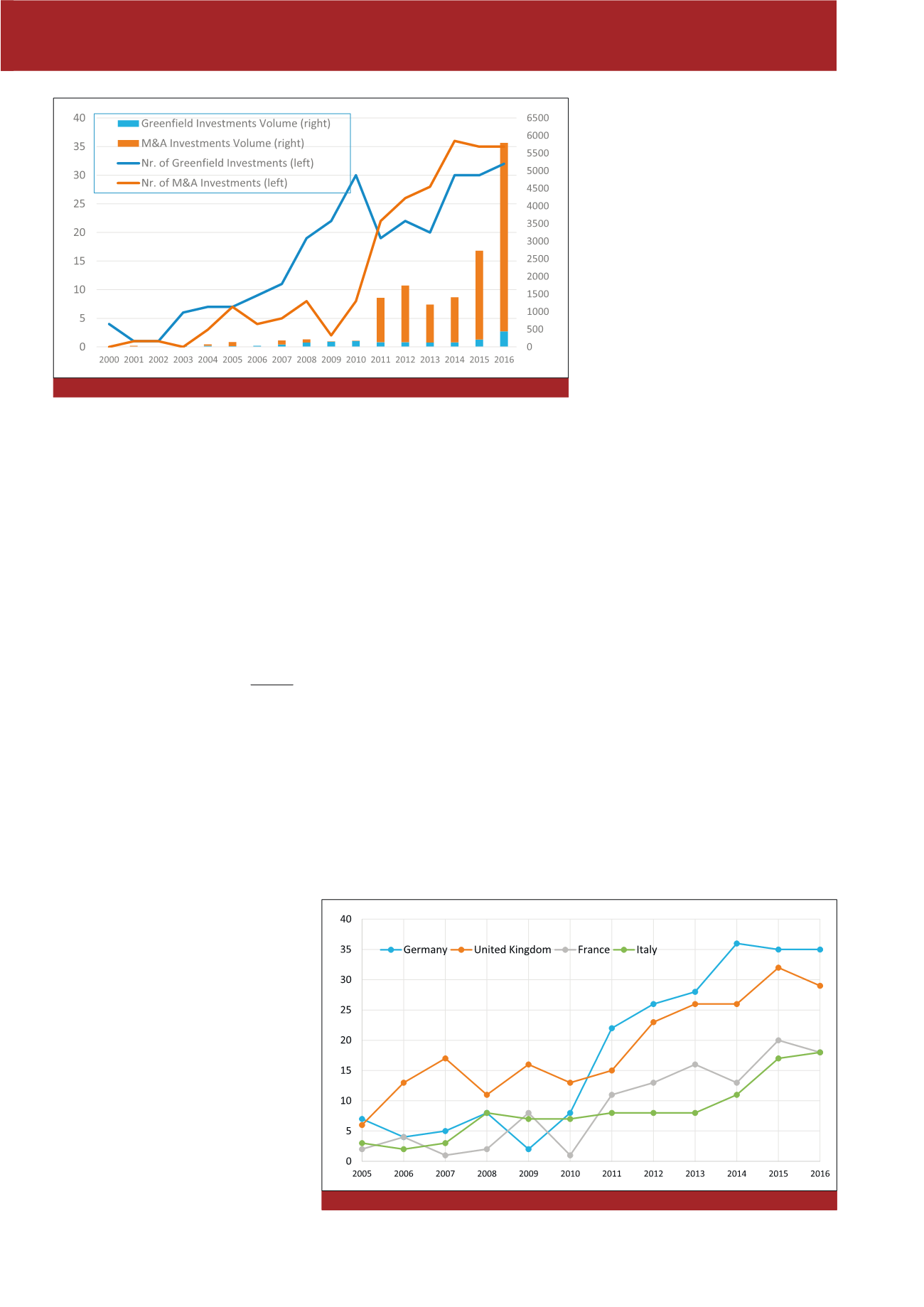
65
factors. To each sub-factors, the survey parti-
cipants have to rate from 1 to 5, where 1 is the
most favorable and 5 is the least favorable
(favorable in terms of the benefit for the
purchaser). The survey with the Chinese ma-
nagers was conducted in the time period of 4th
December 2016 to 1st March 2017. The total
number of respondents was 32, originating
from a wide variety of senior managers in di-
verse sectors, including automobiles, high-
tech manufacturing, fashion and clothing, ban-
king, real estate, fund management and priva-
te equity. The stratified sampling method was
chosen, as the survey focused on the sample
population who are owners or directors of small
and medium companies or investment related
managers in large financial institutions and pri-
vate equity companies. This helped to filter the
sample population to the core group who has
the essential knowledge about M&A or could
be a potential investor in EU.
An analysis of three Hidden Champions
in Germany
A large number of Chinese investments have
targeted one of the most important growth are-
as of the German economy: Hidden Champi-
ons
26
. According to Hermann Simon
27
, Hidden
Champions (HCs) are medium-sized companies
that tend to be unknown to the general public,
yet act as the worldwide market leader or a top
3 supplier in their respective market niche. A
2014 study by the German Federal Ministry for
Science, Research and Economics revealed
that there are at least 1,394 Hidden Champions
Resarch Methodology
In order to fulfill the objectives of this study and
determine the stance of Chinese investors on
the business attractiveness of the four selected
countries (United Kingdom, Germany, France,
Netherland) within EU, the authors conducted a
questionnaire of the Chinese business commu-
nity and several potential investors in Europe.
A survey of Chinese investors in Europe
In the survey the authors have combined the
economic performance and business efficien-
cy in IMD World Competitiveness Yearbook
25
into an economic dimension, while government
efficiency and infrastructure were merged into
the political dimension. Two other dimensions,
culture and technology, were included in order
to show the non business related M&A factors.
In each dimension, there are three to four sub-
due to its highly attractive tax haven policies
and financial- and private equity investments
17
.
The figures for 2017 will indicate major increa-
se in volume for German OFDI from China and
a decrease due to Brexit insecurity in the United
Kingdom. The UK decrease will mainly be in
real estate investments, which are on the other
hand the strongest growth of Chinese OFDI in
Germany.
Since 2011, Germany has become the most
sought destination for M&A in the EU, attracting
the most M&A deals within the region (Figure 5).
Compared with investments into other target
countries, Chinese M&A investments into Ger-
many exhibit a more stable pattern, furthermo-
re benefiting from the diversified industry port-
folio and a strong German economic boost
since 2011. Notable M&A transactions in Ger-
many in 2016 and first half 2017 included the
purchases of EEW Energy, KraussMaffei, Bilfin-
ger Water Technology, Compo Consumer and
the Bigpoint GmbH.
18
According to a recent stu-
dy by PwC, key reasons for Chinese invest-
ments in German firms include market entry
(62%), the acquisition of new technology and
expertise (58%), branding (36%) and diversifi-
cation in general (17%).
As indicated by a recent PwC study, 65% of
Chinese investors in Germany are privately ow-
ned companies, with the remaining 35% ope-
rating under the control of the Chinese govern-
ment. In addition, more than half of the inves-
tors (62%) originate from the southern regions
of China, with only 36% and 2% of firms being
based in the northern parts and central or wes-
tern regions, respectively
24
.
Figure 4: Chinese OFDI investments in Germany 2000-2016
22
Figure 5: Number of Chinese M&A deals by country 2005-2016
23
CM September / Oktober 2018


